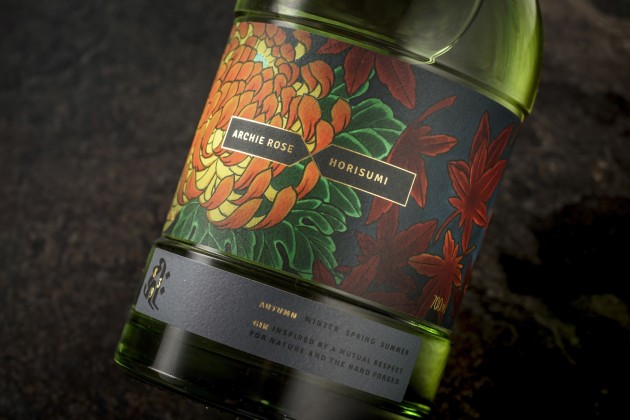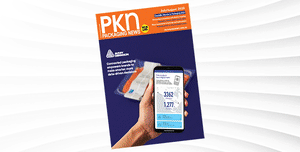The boutique food and beverage market is growing fast, with opportunities, and competition, abounding. Innovative digital labels and packaging can create the consumer engagement brands crave, deliver product authentication, and help drive strong sales.
This article was sponsored by HP. HP invites you to learn more through its ebook and webinar series.
The rapid growth of boutique food and beverage producers, and the onset of multiple SKUs from single products by the big brands, mean competition for consumer engagement is at an all-time high.
The challenge for all brands is to achieve cut-through, connect with their target, and make their product the preferred choice, and not just once but on a continual basis. The marketing mix contains many elements, but key among them is the packaging and label on the product itself.
Today new printing technology from HP Indigo is enabling the creative and marketing teams at brands large and small to leverage their insights, analysis and expertise into that product label and packaging, to deliver the results they seek.
A season for innovation
Typical of the new approach implementing HP Indigo technology is the award-winning Archie Rose gin distillery. Operating in a crowded field of 150 similar businesses, the company has seen tremendous success. Its Four Seasons project exemplified the innovative approach to market.

In this case rather than create a gin, then the packaging, the company took the opposite tack, it approached renowned tattoo artist Horisumi to create artwork for gins, based on the four Japanese seasons, then created the gins based on his designs.
As a young company, Archie Rose wanted to increase brand awareness and support its ongoing consumer engagement drive. Crucially, it also wanted to explore what new opportunities could be opened with limited editions.
Horisumi provided the artwork for all four seasons upfront, to give Archie Rose time to bring his illustrations to life through the flavour of each gin. Once each season’s unique gin formulation was set, the distillery worked with Multi-Color Corporation (MCC), a leading Australian wine label printing company, and the Squad Ink design agency, to turn Horisumi’s artwork into gorgeous gin bottle labels.
The labels were printed on the HP Indigo 6600 Digital Press at MCC, on uncoated paper specially selected for its texture, which is akin to the watercolour paper Horisumi used for his artwork. Gold foil embellishments were added to bring the concept together, locked up with the Archie Rose brand. The labels later went on to win the design agency a Gold FAB Award for packaging design – a prestigious win that echoes Archie Rose’s many awards for its products.
“Thanks to Horisumi’s artwork and the packaging, it’s a product that really stands out on shelf. The label design, paper stock, and printing all contributed to a really beautiful packaging result,” says Victoria Tulloch, head of marketing at Archie Rose.

Mark Daws, director Labels and Packaging at HP Indigo supplier Currie Group says, “The HP Indigo seven colour print technology stands on its own, there is no other liquid ink digital print system. Seven colour liquid ink digital technology means that brands will enjoy outstanding graphics – the award winning Archie Rose packaging is testament to that – along with the production benefits of digital print, with its agility, flexibility, speed to market and consistency.”
As Archie Rose’s first limited edition, the collection achieved phenomenal sales results. The first set of 3000 numbered bottles – for Autumn – sold out in four months. The Winter release sold in 3.5 months, Spring in just two weeks, and the final release, Summer, sold out within just six hours.
Maximising creativity
“Competition in any field is intense. Whether the product is on a supermarket shelf, in an organic food store, or an image in a catalogue or website, the labels and packaging need to be outstanding. And beyond that product authentication is crucial,” Daws says. “Today, though, brands can access print technology, and particularly HP Indigo technology that offers them the opportunity to use their creativity to the maximum, while delivering brand security.”
The proliferation of boutique products, and SKUs, is being underpinned by modern digital print technology, with its on-demand ability. The key though is in the consistency of quality in the print produced, with the labels and packaging needing to be precisely the same every time across every SKU. Daws says, “With the backing of the HP computer power, HP Indigo presses are able to deliver consistency across time and media.”
It is not just the hardware that is delivering results, HP with its immense software capabilities has some powerful algorithms at work. Its Mosaic software for instance can create endless variables from the same elements, providing instant recognition, but with individualised labels and packaging.
The rise of boutique brands, the explosion of SKUs, and the ability of digital technology to print on demand has meant run lengths have come right down. No longer do brands have to order a year’s worth of labels as they used to with analogue printing technology. On demand means no waste, no excess inventory, and flexibility. Where previously labels would be stored in a warehouse, now they are effectively stored as single file, ready to be drawn down as required.

Craig Walmsley, HP Indigo country manager for ANZ says, “Australia is not a big market compared to some of the other developed areas such as Europe, Japan and the US. This lends itself to digital printing. A typical run length here would be 2000-2500 linear metres, which is exactly where HP Indigo is suited.”
While Australia may not enjoy the volumes of other countries, it certainly has the quality demand, and capability. The winner of this year’s World Label Award Digital in the wines and spirits category is Soar Print, based in Auckland, for its Vine Label, again printed on an HP Indigo. Walmsley says, “The digital benefits of the press come with no compromise on quality.”
New Zealand in fact is a hotbed of artisan food and beverage production. Daws says, “Ïf you visit a New Zealand supermarket it is not the big brands that dominate, but the craft products that take up the shelf space, companies that started in the farmer’s markets and have now moved up. The capabilities of HP Indigo with its colour quality, consistency and on-demand production is helping drive this change in the market. They don’t need to order large volumes. They are using labels, pouches, sachets, all produced on the HP Indigo, all in run lengths they need.”
It seems brands seeking compelling customer engagement have a new and powerful weapon in their armoury, whether they are a small company on the way up or a major operator looking to target multiple demographics with product versions.
Brand security
High value products, like boutique wine and spirits, pharmaceuticals and some FMCGs, have a corresponding high appeal to counterfeiters, something the scientists at HP Indigo in Israel are well aware of.
Craig Walmsley, HP Indigo country manager for ANZ says, “HP Indigo has a strong track record and focus on security and brand protection, because we see that being of high interest to the brands. Many products produced today on HP Indigo have two or three levels of security. Some will just have a 3D barcode, but many will have invisible inks, a barcode and a track-and-trace system. Obviously, brands don’t talk about it because they don’t want consumers to know that it’s there.”
Counterfeit products represent a $1.2 trillion loss to brand owners, and a major danger to consumers particularly with counterfeit pharmaceuticals, and the projections are in the next three years that figure will increase by 50 per cent.
Mark Daws said, “Label and narrow web printers that can offer their customers innovative brand protection solutions will clearly have an attractive proposition.”









